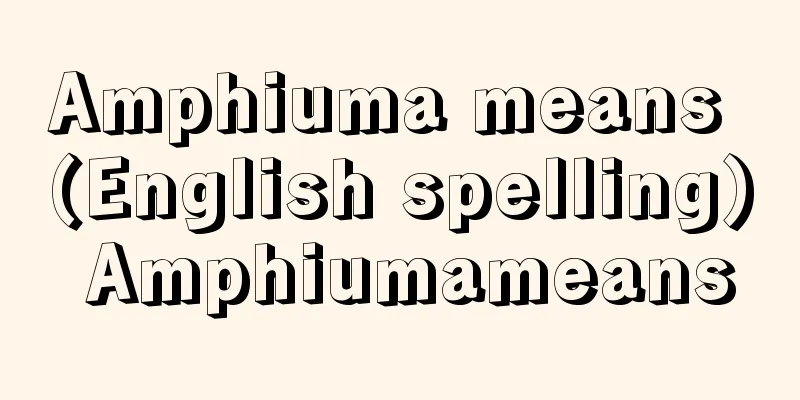Góngora (English spelling) Luis de Góngora y Argote

|
Spanish poet. Born in Cordoba as the son of a cultured nobleman, he studied at the University of Salamanca, but abandoned his studies midway, becoming absorbed in literature and gambling. Even after he became a patron of the great cathedral of Cordoba with his father's help, he was often criticized for his behavior and sent to various parts of Spain as a form of nuisance. He spent most of his life in his hometown, and wrote his masterpieces, "The Fables of Polyphemus and Galatea" (1612) and "The First Part of Solitude" (1613), while retiring to the countryside near Cordoba. After establishing his reputation as a poet with these two works, he moved to Madrid, and in 1617 was appointed honorary chaplain to Philip III. However, he was plagued by financial problems and illness in his later years, and returned to Cordoba to die. Góngora is often described as having "turned from a poet of light to a poet of darkness." His early poems, which were based on traditional poetic forms such as romances and letrillas, were full of musicality and wit, and were easy to read, but his later works, such as "The Fable of Polyphemus and Galatea" and "Sorrow of Solitude," were extremely difficult to understand, and were difficult to understand without a great deal of intellectual knowledge, due to his pursuit of the purity of poetic expression. His unique style of expression, which depicts stories based on mythology with an unconventional syntax that boldly incorporates Latin vocabulary and grammar, was called Gongorismo or ornamentalism after his name, and had a huge influence not only on 17th century Spanish poetry but on literature in general. However, there were many literary figures, such as Lope and Quevedo, who were critical of Gongorismo, and there was a fierce exchange between the two. Góngora's reputation declined during the 18th and 19th centuries, but rose again in the 20th century, and today he is considered one of the greatest poets Spain has ever produced. [Kuwana Kazuhiro] "The Poetic Images of Góngora" by Garcia Lorca, translated by Kazuhiro Kuwana (included in World Criticism Series 3, 1975, Chikuma Shobo) [Reference] |Source: Shogakukan Encyclopedia Nipponica About Encyclopedia Nipponica Information | Legend |
|
スペインの詩人。教養豊かな貴族の子としてコルドバに生まれ、サラマンカ大学に学んだが、文学と賭博(とばく)に熱中して学業を中途で放棄した。父親の助力でコルドバの大寺院の扶持(ふち)僧になったのちも、しばしば行状をとがめられ、やっかい払いの形でスペイン各地に派遣されている。彼は生涯の大半を故郷の町で過ごし、代表作『ポリフェーモとガラテーアの寓話(ぐうわ)』(1612)と『孤愁』第1部(1613)も、コルドバに近い田舎(いなか)に引きこもっていたときに書いたが、この両作品で詩人としての名声を確立すると、居をマドリードに移し、1617年にはフェリペ3世の名誉教誨(きょうかい)師に任命された。しかし晩年は金銭問題と病気に悩まされ、ふたたびコルドバに帰って死んだ。 ゴンゴラはしばしば「光の詩人から闇(やみ)の詩人に転じた」と評されるように、ロマンセ(歌謡)やレトリーリャ(畳句(じょうく)を備えた叙情詩)といった伝統的な詩型による初期の詩は、音楽性と機知に富んだ平明な作品が多く、だれからも親しまれやすいが、それに反して『ポリフェーモとガラテーアの寓話』や『孤愁』といった後期の作品は、詩的表現の純粋性を求めるあまり極度に難解になっていて、かなりの知的素養がないと理解しがたい。ラテン語の語彙(ごい)と文章法を大胆に取り入れた破格的な構文で、神話を下敷きにした物語を描くその独特な表現法は、彼の名にちなんでゴンゴリスモとか、文飾主義とよばれ、17世紀のスペイン詩のみならず文学全般にきわめて大きな影響を及ぼした。しかしその一方でローペやケベードのように、ゴンゴリスモに批判的な文学者も少なくなく、両者の間で激しい応酬があった。ゴンゴラの声価は18、19世紀には低下したが、20世紀になるとふたたび高くなり、今日ではスペインの生んだ最高の詩人の一人とみなされている。 [桑名一博] 『ガルシア・ロルカ著、桑名一博訳「ゴンゴラの詩的イメージ」(『世界批評大系3』所収・1975・筑摩書房)』 [参照項目] |出典 小学館 日本大百科全書(ニッポニカ)日本大百科全書(ニッポニカ)について 情報 | 凡例 |
<<: Concordat (English spelling) concordatum (Latin)
>>: Democratic Republic of the Congo (English spelling)
Recommend
Mizura
Also written as tsunokami. A hairstyle worn by men...
Congreve, W (scientist) - CongreveW
...In terms of technological history, it refers t...
Cohesive energy density - Cohesive energy density
The energy required to separate molecules or atom...
《Olathe》 - Olathe
…However, other playwrights were jealous of his g...
Sadachika Ise
Year of death: Bunmei 5.2.21 (1473.3.19) Year of b...
birth canal
...First, I would like to talk about these three ...
Summer growth - Summer growth
In the Middle Ages, it was also written as "n...
Canker
An underwater work test vessel belonging to the Ja...
Miki Sawada
Social worker. Founder of the Elizabeth Sanders H...
Emma wheat - Emma wheat
…There are about seven cultivated species of duru...
Aibiki (English spelling) Svidanie
This is a story from the collection of stories by ...
Fulbertus
…the school of medieval philosophy formed in Char...
Koina Hanbei Mono - Koina Hanbei Mono
A type of puppet theater and kabuki kyogen. A grou...
Al-Anbār (English spelling)
An ancient Mesopotamian city located on the left b...
Distance point - distance point
…In the early 16th century, Dürer introduced pers...









